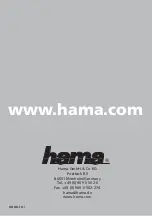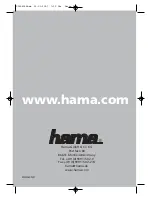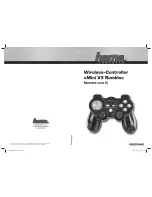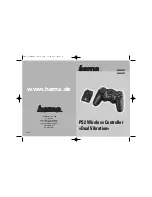
COMMERCIAL IN CONFIDENCE
Page 2
1. MEMORY MAP OF PARAMETERS
WARNING:-
As with any computer system writing to any unauthorised memory address will
inevitably cause malfunction and may put the instrument in an indeterminate or dangerous state. It is
the users responsibility to ensure correct use.
The instruments uses a 8051 type processor. This has two types of RAM: the internal 256 bytes and
the external 256 bytes, data is also stored in EEPROM (non-volatile ram). Each data area requires a
different access method internally.
Data can be accessed as either one byte or a two byte word - the word need not necessarily lie on an
even address boundary. To simplify ModBus messages the unit decodes the MSB of the ModBus
address to select which type of memory to access - thus all memory looks the same to the end user.
Decoding is as follows:
bit 7
bit 6
bit 5
bit 4
bit 3
bit 2
bit 1
bit 0
always 0
always 0
always 0
1=security
always 0
1=NVram
1=external
1=one byte
so that the following addresses specify the given memory areas:
•
00xxH references internal memory - two bytes wide
•
01xxH references internal memory - one byte wide
•
02xxH references external memory - two bytes wide
•
03xxH references external memory - one byte wide
•
04xxH references NV memory - two bytes wide
•
05xxH references NV memory - one byte wide
note that messages with both bits 1 and 2 set are misleading and should not occur, however, they will
be interpreted as if bit 2 was 0. Bit 4 is used to indicate reserved messages - see the section
Security
Messages
below.
Two types of bit value may exist:
•
those which can be set and cleared as a single operation (i.e. directly addressable) are
defined as type
bit
.
•
those which must be set or cleared by reading a byte, masking the bit, then writing the
byte.
Bit addresses are represented by both the absolute hex address and also by bit number (in decimal) if
the bit is directly addressable. Note that, in this document, the bit number is one based (1..128) which
matches the usual representation of ModBus.
The byte and word addresses given are the absolute HEX locations in the instrument.
Depending on the type of ModBus driver being used, these may need to be converted to a
decimal address, plus 1, since some ModBus drivers subtract 1 from the address given.
Thus to
access the Baud Rate (03D6) a ModBus driver would need decimal address 983 (982 + 1).
Shaded sections denote contiguous address space which may be read and written as multiple
registers if the remote software can handle this.
NOTE that due to space limitations the current
implementation does not allow multiple address access - only one word can be accessed per
message.
To facilitate easy reading, the following tables are listed in address order, not the order on the menus.
Extreme care must be taken to write only to those locations indicated. Writing to any other
locations WILL corrupt the instrument, but the effects may not necessarily be immediately
noticed.




































